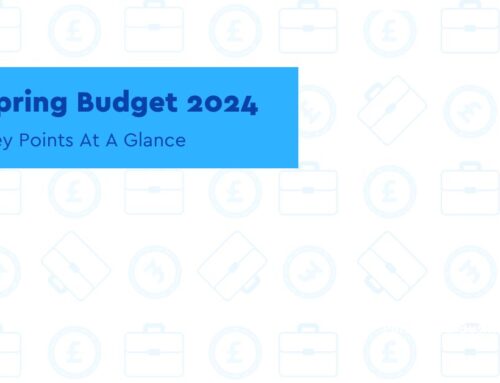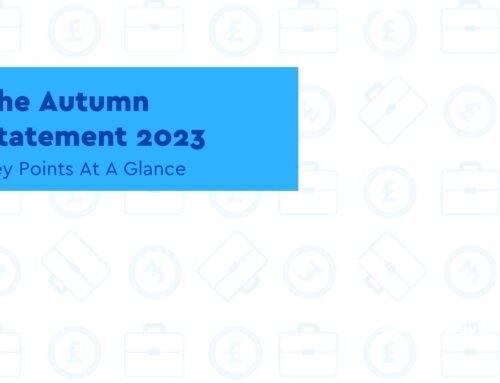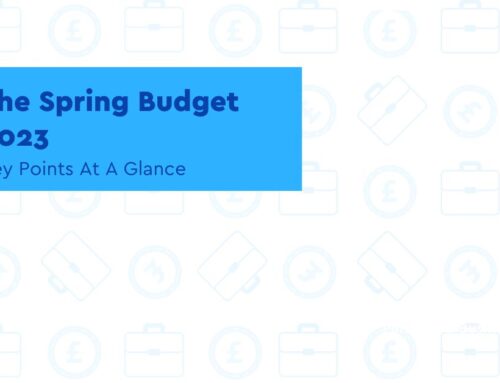News – MTD
MTD for ITSA opened to more taxpayers
Key Points
- The pilot is a test for the official rollout in April 2024
- Taxpayers will need to have an accounting period from April 6 to April 5 to join
HMRC will be opening up the Making Tax Digital for income tax self assessment (MTD for ITSA) pilot to more taxpayers from July 1, 2022.
The pilot is a test for the official rollout in April 2024, and invites self-employed individuals and landlords to register.
Some taxpayers are already taking part in the pilot, but HMRC wants more agents to register to help trial the system.
From July, people with the following sources of income will be able to join:
- Self-employment (including multiple self-employments)
- UK property
- Gift aid
- PAYE income, including employment income and occupational pensions (excluding those with a coded out liability)
- UK interest
- UK dividends
Taxpayers will need to have an accounting period from April 6 to April 5 to join the 2022/23 pilot, and have compatible software.
From April 2024, all businesses with annual income from self-employment or property above £10,000 will have to follow MTD rules. This will affect 4.4 million taxpayers, so HMRC wants the pilot to help smooth the process.
In a statement, HMRC said:
“We’re progressing with the MTD for ITSA pilot and are currently working with software developers to bring in more customers for the 2022/23 tax year, allowing us to test the system and build in customer and agent feedback as we go.
“We will be testing the first quarterly submission with some of these customers from 6 July, after which we aim to open up the pilot more widely to some customer types.”
News – Company Car Tax
Chancellor urged to keep company car tax low to support EV uptake
Key Points
- The BVRLA has launched a campaign called #SeeTheBenefit on company car tax
- It comes as the Government announced it was scrapping the plug-in car grant
The Chancellor is being urged to support the uptake of electric cars by keeping benefit-in-kind (BIK) tax rates low and by publishing them beyond 2024/25.
Highlighting the success of the tax regime for electric cars to date, the British Vehicle Rental and Leasing Association (BVRLA) has launched a campaign called #SeeTheBenefit on company car tax.
It comes as the Government announced it was scrapping the plug-in car grant and instead focussing resources on charging infrastructure and electric trucks and vans.
The campaign is encouraging industry professionals to write to their local MP to educate them on how company car schemes are democratising the move to EVs.
BVRLA Chief Executive, Gerry Keaney said: “The strides we have made as an industry to phase-out petrol and diesel cars before 2030 are clear, nearly 60% of electric vehicles on UK roads are company registered. Order banks are currently healthy, with 80% of salary sacrifice orders being for battery electric vehicles as their low tax rates appeal to drivers.
“The uncertainty caused by the lack of foresight beyond 2024/25, or by seeing a sudden jump in rates, will cause the growth of EVs to stall. This needs to be addressed by the Chancellor in the budget this autumn.”
A key part of the campaign is an event for MPs in July, where a selection of industry experts will host a drive-by event outside the Houses of Parliament.
The event will highlight the positive outcomes that will come with more years of tax foresight, keeping BEV BIK rates low, and staggering any increases to avoid a sudden hike.
There, MPs will be asked to pledge their support to the #SeeTheBenefit campaign and encourage the Chancellor to act in the Autumn Budget.
The BVRLA is calling on representatives from across the industry to write to their local MP and encourage them to attend the event next month.
Via a template on the BVRLA website, letters can automatically be created and issued to MPs, sharing the positive results seen by the current low levels of BIK tax and warning of the detrimental impact that raising rates by too much too quickly will have on the UK’s Road to Zero.
“As we weather the cost-of-living crisis, drivers need to know what their tax bills will be,” continued Keaney. “The Government needs to keep up the fragile momentum it has created in the face of the current economic headwinds, now is not the time to accelerate tax rises.
“The more industry professionals that write to their MP on this matter, the better. Each letter sent gives the campaign more momentum, educates more MPs, and makes our voice louder with those that will ultimately determine future rates.”
Full details of the campaign can be found on the BVRLA website. Anybody looking to share the pre-written letter can do so via the online form. Only requiring the individual’s name, email and postcode, a letter can be generated and shared with their local MP in moments.
The article was derived from: https://www.fleetnews.co.uk/news/latest-fleet-news/electric-fleet-news/2022/06/14/chancellor-urged-to-keep-company-car-tax-low-to-support-ev-uptake
News – PAYE
Election for a separate PAYE scheme: form P350
Key Points
- From April 6, 2022 a change has been made to allow employers to elect during a tax year
- If you want to make an election that takes effect from August 6, you have to make the election before July 6
If you’re an employer and you want to operate more than one PAYE scheme, new regulations mean you can now elect to do so during the tax year.
Previously if you wanted to request a separate PAYE scheme an election had to be made before the beginning of the tax year for which the election was to take effect.
From April 6, 2022 a change has been made to Income Tax (PAYE) Regulation 98 covering ‘Multiple PAYE Schemes’ to allow employers to elect during a tax year.
Under the new regulations an employer must make an election before the beginning of the tax month immediately preceding the tax month for which the election is to have effect. For example, if you want to make an election that takes effect from 6 May, you have to make the election before 6 April.
A late election will be treated as if it had been made in relation to the tax month immediately following the tax month for which the election was to have effect .
If an employer wants to cancel an election, notice of cancellation must be given before the beginning of the tax month for which the election is to be ceased. Cancellation of an election does not prevent the making of a new election for that or a later tax month.
An election which has not yet come into effect may be cancelled at any time before the beginning of the tax month for which it is to have effect.
Employers with more than one PAYE scheme can only claim the Employment Allowance (EA) from one PAYE scheme in that year, regardless of how many PAYE schemes they operate. It is up to the employer to nominate the PAYE scheme on which they want to claim the allowance.
Where an employer with more than one PAYE scheme is eligible for the Employment Allowance but finds that their nominated scheme did not use the full amount in the tax year (because the scheme’s Class 1 NICs liability was less than the maximum allowance on the nominated PAYE scheme), the employer can claim the remaining balance of the Employment Allowance due after the end of the tax year from HMRC, up to a maximum of £3000 for tax years 2016 to 2017, to 2019 to 2020, £4,000 for tax years 2020 to 2021 and 2021 to 2022. Increasing to £5,000 for tax years 2022 to 2023 onwards, provided there is an employer Class 1 NICs liability on the other PAYE schemes.
Once the Employment Allowance has been claimed on a PAYE scheme, the notice will apply against that PAYE scheme in subsequent tax years. The employer and HMRC staff, whenever they are dealing with Employment Allowance claims, must ensure that the allowance is claimed on a single PAYE scheme in the current and subsequent tax years.
The article was derived from gov.uk: https://www.gov.uk/government/publications/employer-bulletin-june-2022/employer-bulletin-june-2022#p350
News – Automatic Enrolment
Govt faces growing pressure to outline plans on AE reform
Key Points
- The ABI proposed gradually increasing the minimum contribution rates from 8 to 12% over the next 10 years
- They argue the new minimum contribution should be split between employers and employees evenly
Calls for the government to outline how automatic enrolment (AE) pension contributions could be increased and the eligibility criteria could be extended have continued to grow, after the Association of British Insurers (ABI) shared a suggested timeline for such changes.
The ABI’s report, Automatic Enrolment: What Will The Next Decade Bring?, argued that whilst AE has been an enormous success and achieved its target of increasing pension participation, people still are not saving enough, with targets on voluntary pension saving rates not materialising as expected.
In light of this, the ABI proposed gradually increasing the minimum contribution rates from 8 per cent to 12 per cent over the next 10 years, arguing that the new minimum contribution should be split between employers and employees evenly.
However, the ABI also acknowledged that there are currently challenges in light of the rising cost of living, therefore recommending that savers should have more flexibility, including an option to ‘opt down’ to 10 per cent contributions.
Alternatively, it suggested that the minimum contribution could be set at 10 per cent, with an option for savers to ‘opt up’ to 12 per cent, although it acknowledged that further research would be needed to understand which option is more affordable for both employers and savers.
The group recommended that a “whole of market solution” for small pots should be implemented alongside this to tackle the current trajectory of 22 million pots by the end of the next decade, also suggesting that this legislation should enable contract-based providers to carry out non-consented transfers.
In addition to this, whilst the government has previously committed to extending AE by lowering the age threshold from 22 to 18 and reducing the earnings threshold so that contributions are made from the first pound earned from the mid 2020s, the ABI argued that these changes need to be legislated “as a matter of urgency”.
In particular, the ABI recommended that the lower qualifying earnings threshold be reduced to £4,160 in 2023, £2,080 in 2024, and £1 in 2025, before reducing the threshold to £0 as part of a Pensions Bill in 2025/26.
The ABI suggested that the next Pensions Bill should also include provisions to reduce the age threshold and allow 18-year olds to be automatically enrolled, and to introduce a small pots solution.
Changes to contribution levels were proposed for slightly later, with the ABI recommending that these be included in a further Pensions Bill in 2028, starting with a rise in employer contribution at 5 per cent, before raising both employer and employee contributions to 6 per cent, respectively, in 2031.
Commenting on the recommendations, ABI director of policy, long term savings and protection, Dr Yvonne Braun, stated: “The huge success of automatic enrolment reflects a long-term plan based on consensus between political parties, industry and employers.
“We need the same approach now to determine the future of the policy, ensuring more people are included and are saving enough, with the right level of flexibility. Our report describes the key steps for the next chapter of automatic enrolment and sets out specific recommendations to adapt and evolve the policy.”
The report has also received backing from some of the wider industry, with Standard Life workplace managing director, Gail Izat, highlighting the call for minimum contributions to be increased to 12 per cent over the next decade as “sensible”.
“Given the current economic conditions are putting pressure on both corporate and personal finances it will be important to carefully consider how these changes can be implemented,” Izat continued.
“Given it is most likely that such changes would be phased in over a number of years, we believe that it is important for the decisions to be made in the very near future.”
Adding to this, Fidelity International head of pension products & policy, James Carter, argued that “now is the right time to review the UK’s pension system in the round, including the state pension”.
He continued: “For lower earners, the state pension currently provides the majority of their retirement income. The future value of the triple lock and the state pension therefore directly influences the level of provision that workplace pensions need to offer.
“With increasing dependence on DC pensions at retirement, state, workplace and private provision need to be considered in tandem to create a secure future for the UK’s older generations and the generations that will come after them.
“This all obviously comes at a time of fragility for public finances and employer affordability, making for no easy answers. As an industry, this is something we need to recognise as we work with policymakers and industry groups such as the ABI.”
The article was derived from: https://www.pensionsage.com/pa/Govt-faces-further-calls-to-outline-plans-for-AE-reforms.php
Latest Snippets
Help to Grow extends to more participants
The Government has extended the eligibility criteria for its Help to Grow: Management scheme.
Previously, only one person per business could take part in the scheme but now businesses with 10 or more employees can register two people to take part.
Business leaders will now be offered 50 hours of leadership and management training across 12 weeks, backed by £220 million of Government funding. This spend will cover 90% of the costs.
The rollout of the programme is part of the Government’s aim to strengthen the economy and address the rising cost of living. This means business leaders can access mentoring from £750, benefiting from a network of peers and tailored business growth plans.
People who participated in the small business leadership programme will also be eligible to join the scheme.
Increase in National Insurance thresholds from July
As part of the Spring Statement 2022, the UK government announced an increase in National Insurance thresholds affecting the 2022 to 2023 tax year.
For employers, the threshold changes will take effect from July 6 meaning employees will pay National Insurance contributions on less of their income.
The Primary threshold from July 6, 2022 to April 5, 2023 will be £242 per week and £1,048 per month, equivalent to £12,570 per year (increased from £9,880 per year). See the guidance Rates and thresholds for employers 2022 to 2023, ‘Class 1 National Insurance thresholds’ for further information.
The National Insurance lower profits limit for self-employed people is also increasing in line with the changes for employees. The annual lower profits limit will be set to £11,908 for 2022 to 2023. This is equivalent to 13 weeks of the threshold at £9,880 and 39 weeks at £12,570, mirroring the position for employees.
Self-employed people will also no longer be required to pay Class 2 National Insurance contributions on profits between the Small Profits threshold (£6,725) and Lower Profits limit (£11,908), but still be able to build National Insurance credits.
Get In Touch
At Morgan Reach, we understand every business needs a little help now and again-especially when it comes to the financial side of things. Therefore, to help our clients and visitors we endeavour to cover as much of the business news as possible. If you are self-employed or run a business and need assistance and advice on how these news could make a difference to you or your business, feel free to get in touch with the experts at Morgan Reach. Our business growth experts at Morgan Reach will guide you through what support is available for you or your business as well as the latest news that may affect you.







